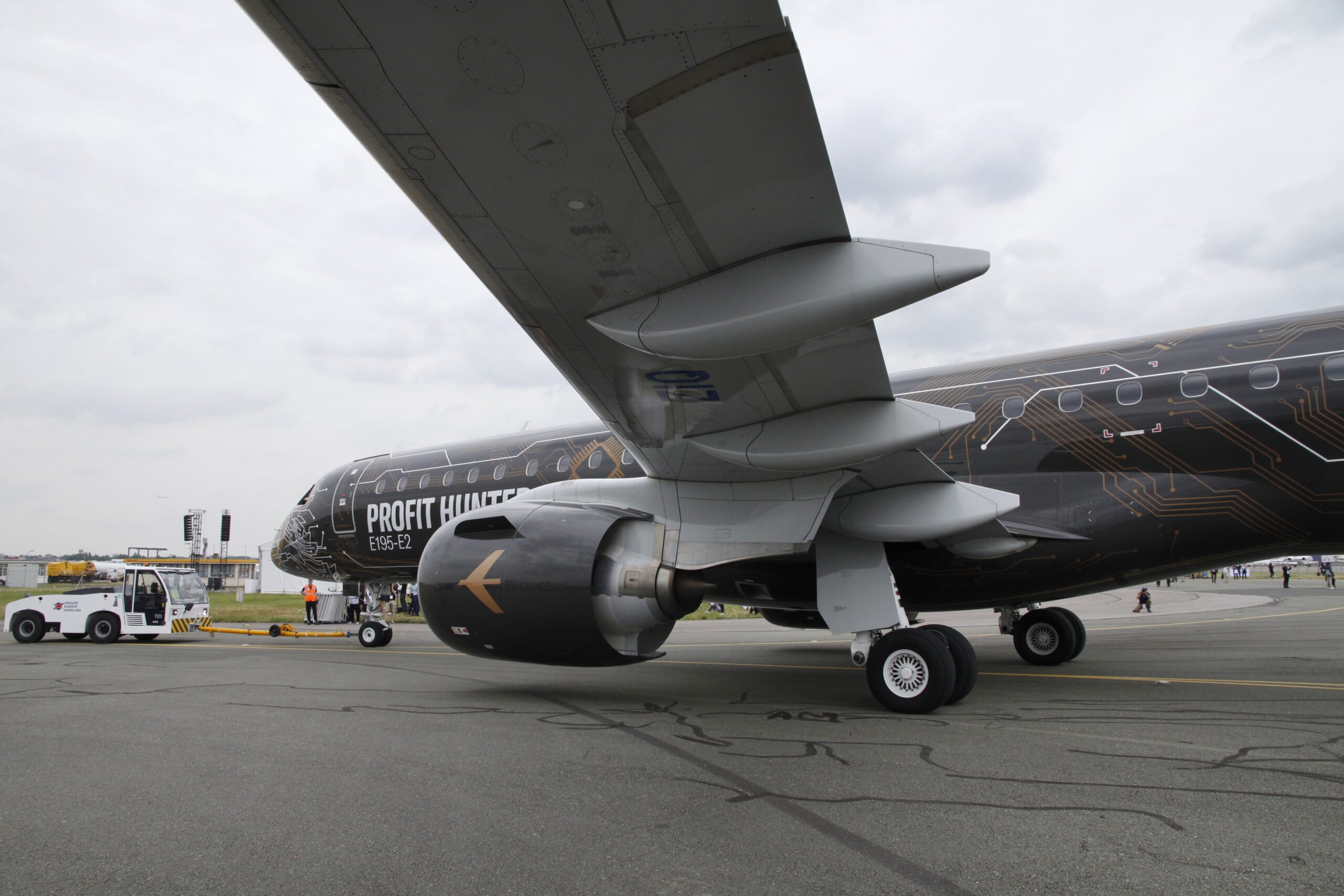
MG 8710 scaled
Nine months after the E190-E2, the Embraer E195-E2 has now also received the type certificate from the Chinese regulatory agency CAAC. The airframer says it is confident that it will be able to conclude sales for the E2-series, on which it has been working for some time. Embraer has to deliver on E195-E2 promises in China.
Certification of the largest member of the E2-family was expected not long after the E190-E2 received its type certificate last November during the Zhuhai Airshow, but still took nine months to be finalized.
During the FY22 results earnings call, Embraer President and CEO Francisco Gomes Neto said that various sales campaigns in China were ongoing and he was optimistic to conclude some of them. Gomes Neto joined Brazilian President Lulu during a state visit to China this spring to put his weight behind the negotiations, but so far without concrete results.
Arjan Meijer, President and CEO of Embraer Commercial Aviation, says in a media statement: “Our team in China is actively working with potential customers and making good progress. There are significant opportunities for the E2 in China, which offers complementary capacity to China’s indigenous ARJ21 and C919 aircraft; combined, they provide flexible, efficient, and eco-friendly options for Chinese airlines, meeting the demand of the world’s fast-growing air transportation market.”
“With a maximum of 146 seats, E195-E2 is the right size to profitably complement larger narrowbodies on lower density routes, connecting regional airports and offering travelers living in secondary and tertiary cities with one-stop access to routes worldwide,” added Guo Qing, Managing Director and Vice President Commercial Aviation of Embraer China.
Opportunities to secondary cities
Embraer is forecasting 2.270 deliveries of regional jets in the Asia Pacific region including China in the next twenty years, it said in June in its latest market forecast. But the Brazilians are not alone in this market, with strong competition coming from within China with the COMAC C919 and ARJ21. Airbus is also trying to enter the market with the A220, but the type still needs to be certified.
Revenues per passenger kilometers (RPK) in China are expected to grow by 4.4 percent per year. There are 7.290 origin of destination city pairs in China and this number is growing as airlines launch new routes and new airports are constructed. Connectivity could be enhanced with the introduction of more regional jets, especially to secondary cities.
Today, Embraer has only limited exposure in China. The active fleet includes 85 E1s that fly with Tianjin Airlines, Hebei Airlines, Beibu Gulf Airlines, and Colorful Guizhou Airlines. The ERJ145, which used to be produced in Harbin on a limited scale, was operated by Tianjin Airlines (25), China Eastern (10), and Hebei Airlines (6), but all aircraft have been stored.
Gomes Neto has stated recently that Embraer would consider establishing a final assembly line in China again if it succeeds in selling enough aircraft. In an interview with Aviation Week in June, he mentioned “more than fifty” as a number beyond which a Chinese FAL would make sense. He pointed to the Brazilian-Chinese bilateral agreement that specifically mentions Embraer in relation to potential partnerships.
The Chinese type certification of the biggest and most popular E2-jet now removes at least this hurdle for potential Chinese customers to do business with Embraer. But it also means that Embraer has now to deliver and convert potential sales into firm orders. So watch this space for any updates…
Views: 6



